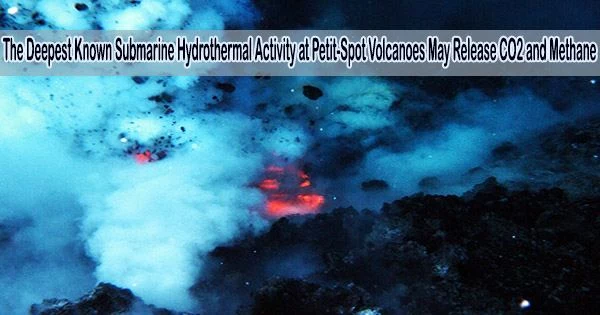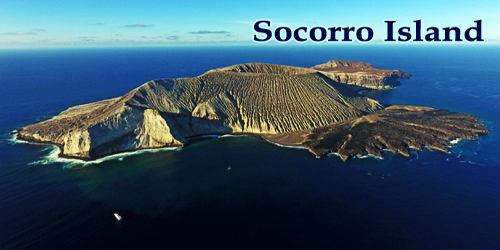Numerous distinct elements are actively contributed to the oceanic environment by underwater volcanism on the Earth’s crust. As a result, they are crucial to the ocean’s biogeochemical and chemosynthetic cycles.
There is little knowledge of low-temperature hydrothermal systems in other volcanoes, such as “petit-spot” volcanoes, despite numerous studies on high-temperature hydrothermal systems in the mid-ocean ridge, a series of underwater volcanoes that trace the edges of the various oceanic plates.
Small volcanoes called petit-spot volcanoes are present all over the planet in areas where oceanic plates flex. Recent research in the Japan Trench’s east has revealed that carbon dioxide (CO2)-enriched alkaline magma is erupted by petit-spot volcanoes.
Peperite, a volcanic rock that is produced by these volcanoes as a result of heating water-rich material, is a byproduct of methanogenesis and hydrothermal fluid production.
Thus, it is hypothesized that methane-containing hydrothermal fluids may be released by petit-spot volcanoes. These findings suggest that in order to adequately assess petit-spot volcanoes’ contributions to the marine biogeochemical cycle, a deeper understanding of their hydrothermal activity is required.
Based on previous research, we can estimate hydrothermal fluid from petit-spot volcanoes to be enriched in CO2 and methane compared to that from the mid-ocean ridge. This means, in turn, that the elemental contributions from petit-spot hydrothermal activity around the world may potentially have important implications for global biogeochemical cycles, in particular the carbon cycle.
Professor Keishiro Azami
In a recent study, a team of scientists, including Assistant Professor Keishiro Azami from Waseda University, investigated hydrothermal deposits from a petit-spot volcano at a water depth of 5.7 km in the Japan Trench in the western North Pacific Ocean.
“The submarine hydrothermal activity we have described in our paper is the deepest known to date. Based on our findings, we have further estimated the hydrothermal interactions that occur in petit-spot volcanoes,” explains Azami.
The research team also included Dr. Shiki Machida from Chiba Institution of Technology and Associate Professor Naoto Hirano from Tohoku University. The paper has been published in Communications Earth & Environment.
The scientists examined the chemical and mineralogical makeup of dredge samples taken from the ocean floor close to the petit-spot volcano as part of their investigation. They found that the samples were primarily composed of iron (Fe) and manganese (Mn) oxides, and that their characteristics were attributed to hydrothermal origin, i.e., the Fe-Mn oxides precipitated directly from hydrothermal fluid.
These findings suggest that the creation of these oxides resulted from hydrothermal activity at the petit-spot volcano, the deepest hydrothermal site to date. The samples’ chemical and mineral compositions were also discovered by the researchers to be a sign of low-temperature hydrothermal activity.
After determining the elemental distribution of the sample cross-sections using x-ray fluorescence spectroscopy, the researchers ran independent component analysis on the distribution data to clarify how these Fe-Mn oxides were created.
Their findings suggested that the formation of these Fe-Mn oxides starts when petit-spot magma produces low-temperature hydrothermal fluid, which flows up via the sediment column and precipitates Mn oxides at the interface with seawater. This Mn oxide layer, which contains silicate debris, then grows downwards toward the seabed as more Mn oxide is deposited.
Eventually this debris is altered. Next, Fe oxides are deposited via the same action on the interface between the low-temperature hydrothermal fluid and the Mn oxides. After the hydrothermal activity stops, a hydrogenetic ring develops on these deposits at the surface that is exposed to seawater.
“Based on previous research, we can estimate hydrothermal fluid from petit-spot volcanoes to be enriched in CO2 and methane compared to that from the mid-ocean ridge,” explains Azami. “This means, in turn, that the elemental contributions from petit-spot hydrothermal activity around the world may potentially have important implications for global biogeochemical cycles, in particular the carbon cycle.”
These results indicate the necessity for additional research on petit-spot volcanoes and emphasize the existence of hydrothermal activity in cold and old oceanic plates.
















